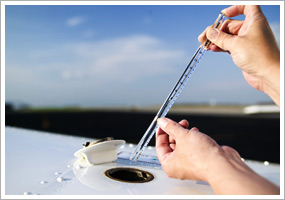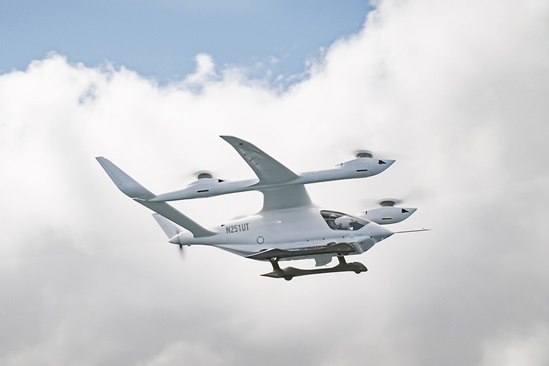training tipsThe fuel left behind The training environment doesn't always realistically consider fuel needs. Local training flights routinely go out full—except some two-seat trainers with low useful loads—and flight lessons may be too brief to call fuel quantity into question. Cross-countries are an exception. After you fly one, compare your actual fuel consumption to your preflight estimates. Discuss any difference with your flight instructor. For a light but telling look at pilots' sometimes-too-casual approach to fuel planning, see this Pilot Safety Announcement from the Air Safety Institute. On solo cross-countries, taking off with full fuel and refueling at the farthest point from home is standard practice and cheap insurance against fuel problems that could result from deviations around unexpected weather, or even getting lost. Prepare for that future day when carrying maximum fuel may not be the sound-and-simple judgment call that it is now. That might happen when you are faced with a flight with passengers and baggage from a short runway or under high-density-altitude conditions. Flying responsibly with a partial fuel load requires a reliable method of measuring the fuel supply. Use a calibrated dipstick, making sure that the aircraft is on level ground when you "stick the tanks." En route, think of fuel consumption in terms of hours and minutes, rather than gallons, and keep careful track of time remaining (allowing for reserves). “If you know how many minutes of fuel you have and how long it will take to reach your destination or fuel stop, it's easy to know if you'll need your reserve,” says the Air Safety Institute's Fuel Awareness Safety Advisor. Adjust for any long climbs or changes to your planned power setting. Fuel burns stated in your pilot's operating handbook will only be delivered by the designated method of leaning the mixture. Keep up your calculations, regardless of what the fuel gauges say! Their unreliability has drawn many cautionary warnings, yet remains causal in numerous fuel-exhaustion accidents. Research has sought to determine where the margin of error lies in pilots' variable ability to estimate fuel values. What emerged was that many pilots needed to crunch their numbers more carefully. training productsLearn to fly eBook bundle from ASAIf you know someone who’s been on the fence about learning to fly, a value-priced e-book bundle from Aviation Supplies and Academics might get them started. The two-book package includes Flight Training Contributing Editor Greg Brown’s You Can Fly! coupled with the FAA’s Student Pilot Guide. Brown’s book examines topics such as how to choose a flight instructor and school and making the most of each lesson, whereas the FAA guide covers the frequently asked questions about the requirements for a pilot certificate, medical certificate, and other aspects of training. The bundle sells for $9.95. Download it here.
Note: Products listed have not been evaluated by ePilot editors unless otherwise noted. AOPA assumes no responsibility for products or services listed or for claims or actions by manufacturers or vendors. final exam
Question: I am 26 years old. How long is my student pilot certificate valid?
Answer: FAR 61.19, Duration of pilot and instructor certificates, was amended in 2009. Student pilot certificates for those individuals who have not reached the age of 40 are now valid for five years. The precise wording states that "the student pilot certificate does not expire until 60 calendar months after the month of the date of examination shown on the medical certificate." For student pilots age 40 and older, the certificate is valid for 24 months. A student pilot certificate is also valid for 60 calendar months for those seeking a glider, balloon, or sport pilot certificate—the age of the person does not matter. For more information on the changes to Part 61 that took effect in 2009, read the regulatory brief on AOPA Online.
Got a question for our technical services staff? E-mail [email protected] or call the Pilot Information Center, 800/872-2672. Don’t forget the online archive of “Final Exam” questions and answers, searchable by keyword or topic. |
 The Aug. 12 “
The Aug. 12 “ 

